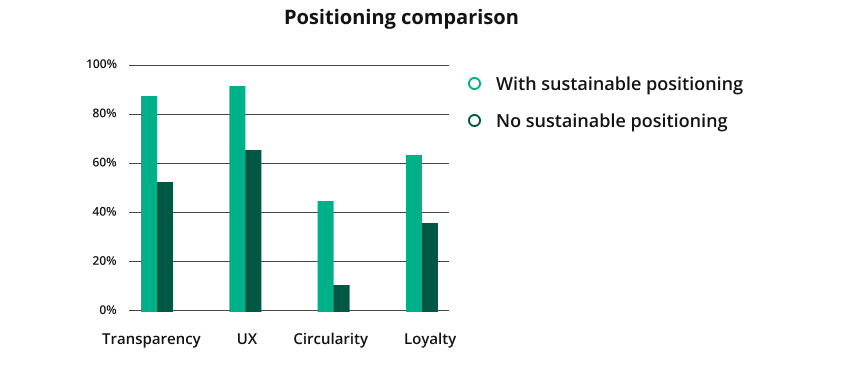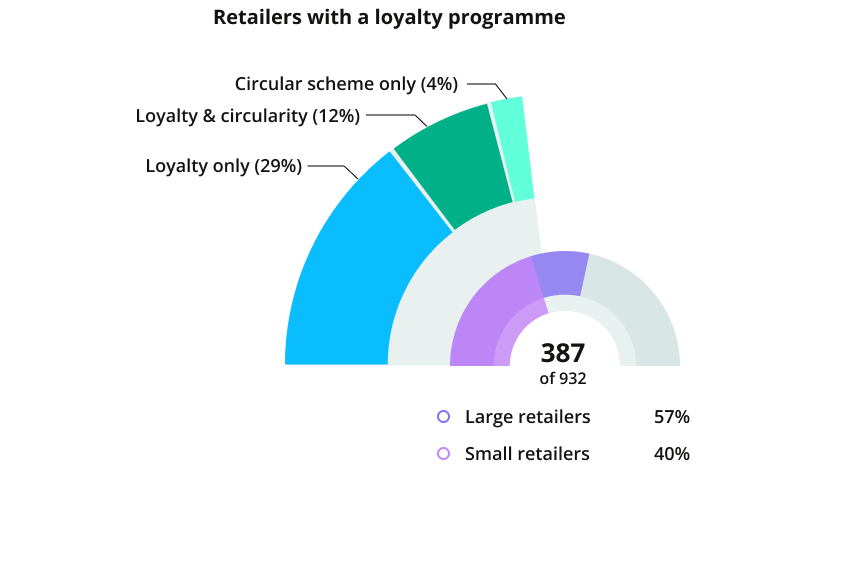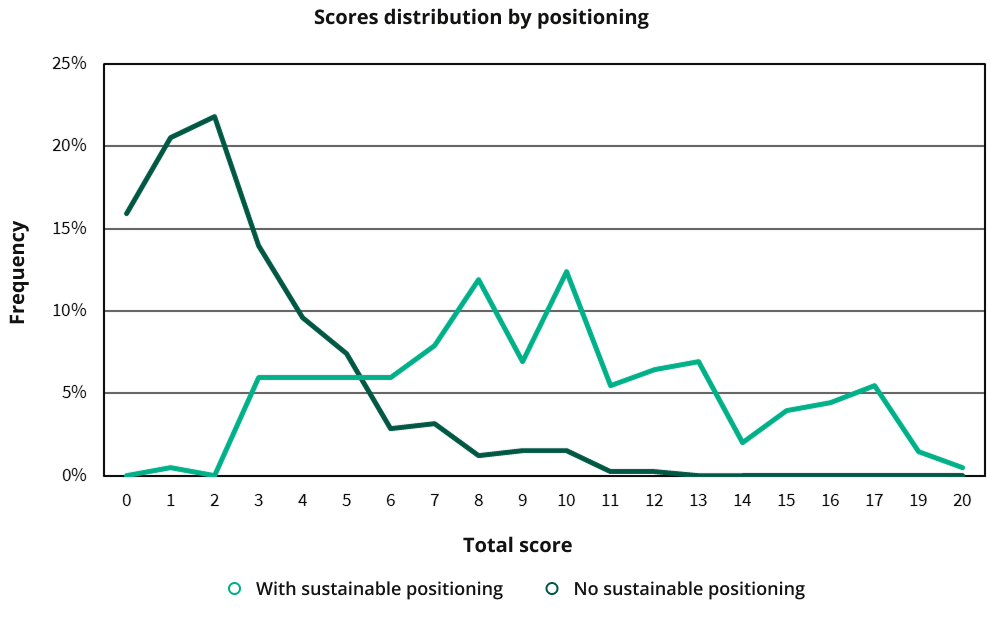November 19, 2025
The digital experience gap in UK fashion ecommerce


November 19, 2025


Most UK fashion retailers are still failing to make sustainability simple or rewarding for their customers, and as a result are missing out on opportunities for both revenue and positive impact.
Our analysis of almost 1,000 UK fashion and apparel websites found a significant digital experience gap that is holding back adoption of circular services and impacting sustainable choice. It highlights where UK retailers are leaving value on the table and missing key drivers for customer engagement and revenue.
Some sustainable brands are leading the way: following through on strong sustainable positioning with a clear and consistent CX for circularity.
Only 14 brands scored 17+ on our Circular CX framework. They all demonstrated consistent, well implemented and joined up customer experience across sustainable and circular offerings:
We created a custom AI application to analyse ecommerce sites against our Circular CX Framework. Websites were scored against 20 creiteria in five areas:
Only 20% of retailers positioned themselves as sustainable (slightly higher amongst small retailers). And while general CX implementation by sustainably positioned brands is relatively good (two thirds went beyond basic sustainable messaging), the majority still lagged behind in terms of circular implementation.

Sustainably positioned brands also scored higher than those without sustainable positioning in all categories, with the biggest difference in transparency and circularity.

Only 16% of all websites analysed featured some form of circular programme (takeback, repair, resale). Takeback and resale partners like Thrift+ and Continue can make circularity accessible and cost effective for small brands, however it remains primarily the domain of larger businesses.
Large retailers are more likely to have implemented a circular programme (22% to 15% for small retailers).
Sustainable brands are making circular schemes easier to find and use, however there are still significant digital experience gaps for all types of retailers. Of all the websites that communicated a circular programme, only 61% made it simple to understand and 53% easy to find and engage with.

With recent studies demonstrating that circular schemes can positively impact everything from basket value to customer acquisition, there is a clear business case for circularity that goes beyond just the environmental benefit, yet that many brands appear to be missing out on.
Two in five brands featured some form of loyalty programme on their website. Amongst large retailers more than half communicated such a scheme.
Yet retailers are still missing opportunities to integrate circularity with loyalty.
Only a quarter of the retailers that communicated a loyalty scheme on their website also had a circular programme. Of these, only 12 had integrated their circular and loyalty schemes by rewarding circular participation.

Most websites scored low overall, with minimal variation between small and large retailers.
Sustainable brands were stronger in all areas, with a higher frequency of mid-range and high scores.


Sustainability is more than just a hygiene factor or ESG goal. Done right, circularity is also a key revenue driver, positively impacting everything from acquisition to repeat purchase rates.
Yet as our research shows, many brands are still struggling to integrate sustainability and circularity effectively into their online customer journeys.
Our Circular CX Framework can help bridge the experience gap so brands can realise this key revenue opportunity. By applying circular economy principles to customer experience design you can drive repeat revenue, keep customers engaged and value in the loop.
Get the framework and find out more about how it can work for your business: Circular CX Framework.